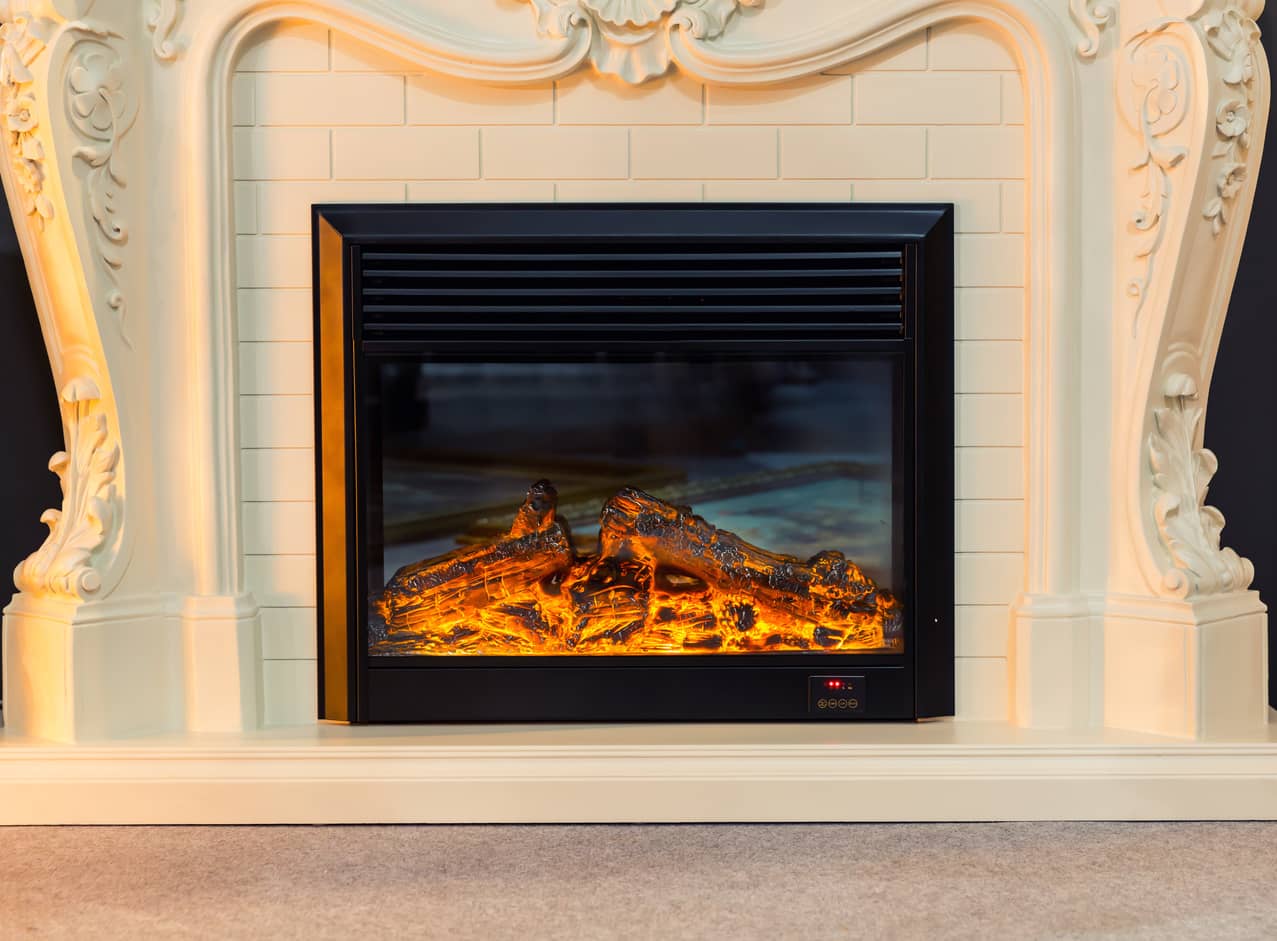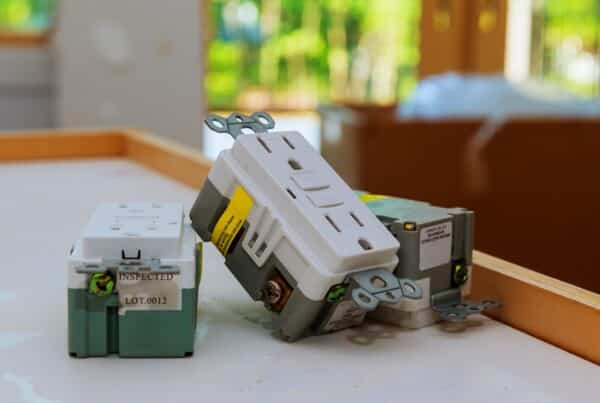
As the crisp chill of winter settles in, the coziness of a warm home becomes increasingly inviting. Among the myriad of heating options, fireplaces are popular for their blend of functionality and coziness. However, another popular option is the electric fireplace, which can be a bit more convenient than traditional kinds. But how do they stack up against the original? Does an electric fireplace give off enough heat to be a proper replacement?
In this guide, we’ll explore the intricacies of electric fireplaces, weigh the benefits and drawbacks, and provide essential maintenance tips to ensure your hearth remains a heartwarming part of your home, no matter what kind it is.
How Does an Electric Fireplace Work?
This heating option brings the warmth and ambiance of a traditional fireplace without the need for wood or gas. An electric fireplace will use electricity to give off heat. Inside the unit, there’s a heating element, similar to what you’d find in an electric space heater. When you turn the fireplace on, electricity heats this element. Then, a fan inside the fireplace blows air over the hot element, which warms the air and circulates it back into the room.
Electric fireplaces have LED lights that project patterns onto a screen or through a log set for the cozy look of flames. These lights can create realistic flame effects, and because they’re LED, they don’t get hot and use very little energy. You can often customize these flame effects to change the color or brightness to suit your mood.
The controls of an electric fireplace are straightforward. You can turn the heat and flame effect on or off, and many models come with a remote control. Some even connect to your home Wi-Fi, allowing you to adjust settings from your phone.

Pros of Electric Fireplaces
Electric fireplaces offer a host of advantages that make them an attractive option for homeowners:
- Safety: With no real flames, electric fireplaces eliminate the risks associated with carbon monoxide and open fires.
- Ease of Installation: Most units simply require a standard 120-volt outlet, while larger models may need a 240-volt outlet. Their portability also allows for diverse placement options.
- Cleanliness: The absence of wood-burning means no ash or soot to clean up, maintaining a cleaner living environment.
- Cost-Efficiency: Electric fireplaces are relatively inexpensive to operate, generally costing between 8 to 9 cents per hour, which translates to an annual expense of about $50 to $100.
Cons of Electric Fireplaces
Despite their benefits, electric fireplaces have limitations to consider:
- Heat Output: Designed for supplemental heating, they can’t replace a central heating system’s capability to warm an entire house.
- Power Dependency: In the event of a power outage, electric fireplaces will not operate, which could be a significant inconvenience.
- Reduced Realism: Although LED technology has advanced, some may miss the authentic sounds and smells of a wood-burning fireplace.
- Electrical Requirements: A dedicated circuit is typically necessary to prevent overloading, especially since electric fireplaces can consume up to 1,500 watts.
Other Recommended Maintenance
Electric fireplace maintenance is simpler than that for wood or gas units. A key aspect of maintenance is keeping the unit clean! Dust often gathers on the LED screen and outer surfaces. This can mar the look and slow down the fan and heating elements. Wiping gently with a soft cloth will prevent dust build-up.
It’s also important to pay attention to the electrical components of your fireplace. Regularly inspect the power cord and any visible wires for signs of wear or damage. The heating element may lose efficiency from dust or time. If warmth drops or heating slows, it could need an expert’s attention.

When Do I Call A Professional?
Calling a professional for your electric fireplace needs might be necessary under certain circumstances, and knowing when to do so can save you time and ensure safety. If you’re considering installing a new electric fireplace, it’s wise to seek professional help. A technician can advise on the optimal placement for heat distribution and aesthetic appeal while ensuring that your home’s electrical system can handle the new appliance. Installation might seem straightforward, but it often involves electrical knowledge that goes beyond just plugging the unit into an outlet.
For routine maintenance checks or when facing operational issues that you’re not able to diagnose, a professional’s input can be invaluable. They can handle everything from basic maintenance to more complex electrical repairs, which is crucial because DIY repairs on an electric fireplace can be risky if you’re not trained in electrical work.
Additionally, if you ever notice your electric fireplace isn’t producing heat efficiently, is making unusual noises, or smells like something is burning, it’s important to turn it off immediately and call a technician. These could be signs of a more serious problem that requires professional attention.
Conclusion
In essence, an electric fireplace is the heating option equipped to give users both the charm and heat of flickering flames with the ease of a switch. It’s a hassle-free solution to add warmth and ambiance to your space without the upkeep of a traditional hearth.
Just remember, while day-to-day maintenance is a breeze, don’t hesitate to call in the pros for installation and any complex issues. Embrace the cozy comfort of your electric fireplace, and let it transform your home into a snug sanctuary throughout the seasons.



